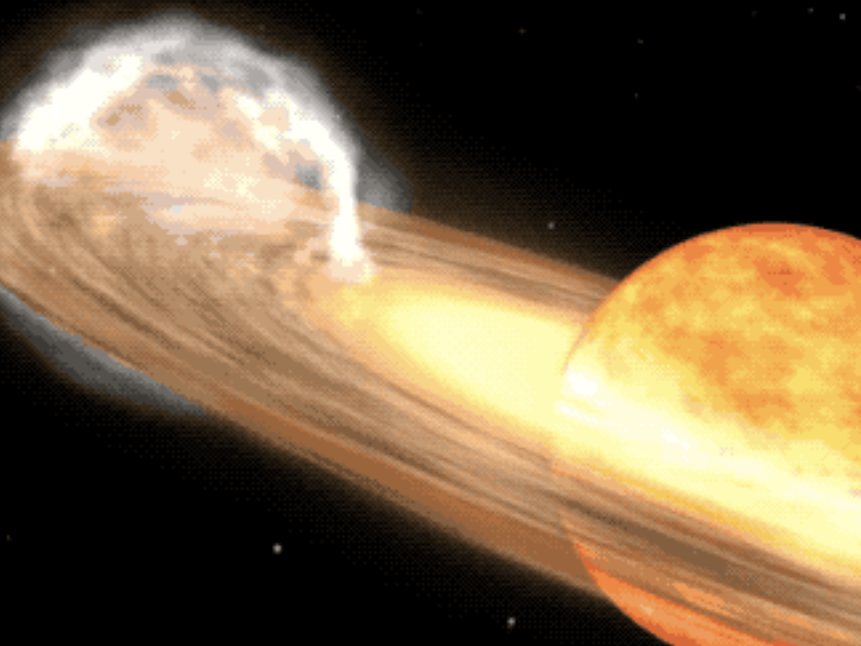Section Branding
Header Content
Never seen an exploding star? This year, you'll have your chance
Primary Content
Space enthusiasts, thank your lucky stars.
Astronomers expect that this year you'll be able to see the explosion of a star system in our Milky Way galaxy by simply looking up at the sky.
Yes, we know you just spent all that time figuring out how to catch the solar eclipse.
But the upcoming nova of the T Coronae Borealis star system is far less common, occurring roughly once every 80 years. A nova takes place when a small star suddenly and dramatically brightens for a short period.
"Seeing that star blow up is much rarer than a solar eclipse," NASA astronomer Bill Cooke told NPR. "So it's kind of a once-in-a-lifetime thing."
Located about 3,000 light years from Earth, T Coronae Borealis is a binary star system containing a white dwarf and a red giant.
As the red giant heats up and its pressure grows, it starts spewing matter that's collected by the white dwarf, according to NASA. The smaller star, roughly the size of Earth, gets so overloaded with that matter that explodes.
"Eventually it accumulates so much material that literally a thermonuclear reaction starts and the star brightens by hundreds of times. It just gets super bright," Cooke said.
Such an event is called a nova, derived from the Latin for "new star," because a once-dim celestial object suddenly becomes illuminated, giving the impression of a new star.
T Coronae Borealis is expected to nova at any moment between now and September. When it does, the star system could surge from a +10 magnitude, which can't be seen by the naked eye, to a +2 magnitude, roughly the same level of brightness as the North Star. (Higher positive numbers indicate dimmer stars.)
Astronomers say that once the nova reaches its peak brightness, it will be visible to viewers for several days. Those using binoculars will be able to see it for just over a week before it dims again.
An outburst of T Coronae Borealis was scientifically observed in 1866, but it may have also been spotted as far back as 1217 by a German monk who documented an object that "shone with great light" for "many days." The star system last exploded in 1946.
NASA says the nova will be visible in the constellation Corona Borealis, which is a "small, semicircular arc" located between the constellations Bootes and Hercules.
When you do spot the T Coronae Borealis outburst, think about this: because the star system is so far away, the outburst we'll see will have already occurred about 3,000 years earlier.
"The collapse of the Bronze Age," said Cooke. "You know, the great empires of Egypt, Troy, they were falling apart."

